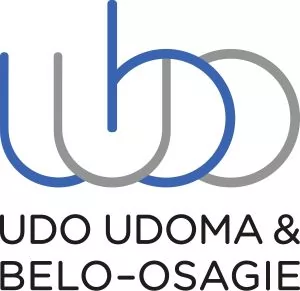Introduction
Contactless payments technology is an alternative payment method that allows users to pay for goods and services without the need for physical contact with a device or the use of a card. It provides an easy, convenient, and efficient cashless option for users. On 27th June, 2023, the Central Bank of Nigeria ("CBN"), in its move to deepen the payment system in Nigeria, issued two circulars in relation to the regulation of contactless payments in Nigeria. The first circular, titled "Guidelines on Contactless Payments in Nigeria" 2023 (the "Guidelines"), provides a framework for the operation of contactless payments in Nigeria. The second circular provides for the attendant transaction limits.
We have provided in this update some of the key provisions of the circulars.
Objective and Scope of the Guidelines
The Guidelines cover all the operations of contactless payments in Nigeria. It sets out the minimum standards and requirements for the operations of contactless payments in the country. It also specifies the roles and responsibilities of the stakeholders involved in contactless payments in Nigeria. The CBN is, through the Guidelines, seeking to ensure that participants in contactless payments implement appropriate risk management processes and measures and keep to the best relevant standards.
Application of the Guidelines
All the stakeholders involved in contactless payments in Nigeria are subject to the Guidelines. These include acquirers, issuers, payment schemes, card schemes, switching companies, payments terminal service providers (PTSPs), payment terminal service aggregators (PTSA), merchants, terminal owners, customers, and any other stakeholder/participant(s) as may be designated by the CBN from time to time.
Minimum Standards for Stakeholders in Contactless Payment Transactions
The Guidelines1 prescribe minimum standards for industry stakeholders whose activities involve the processing and/or storage of customers' information to ensure that their terminals, applications, and processing system are compliant with the set standards under the Guidelines and the rules applicable to the various payment schemes. Stakeholders are required to continuously review and re-certify their standards in line with global best practices. All contactless devices are required to be configured to work within a maximum of 2cm from the terminal to manage data interception-related risks.
Roles and Responsibilities of Stakeholders
Given the vital role played by the stakeholders in the contactless payments ecosystem, the Guidelines contain a significant number of the roles and responsibilities of the various stakeholders. Some of these roles and responsibilities include:
- Only institutions licensed by the CBN are permitted to act as acquirers and issuers for contactless payments. Acquirers are obligated to ensure that their applications, instruments, tokens, and devices meet current prescribed standards and specifications for contactless payments and that they have been duly certified to process contactless payments transactions by the CBN or any authorised body.
- Issuers are to only activate contactless payments with the consent, and at the instance, of a customer. The issuer must obtain evidence of such consent. In addition, after opting in, issuers are to provide customers with the option to opt out of the service when they so desire.
- Domestic contactless payments are to be switched by acquirers and processing entities through a Nigerian switching company. This should be in accordance with the provisions of the switching guidelines. No transactions are permitted by the CBN to be routed outside of Nigeria.2
- There is an obligation placed on the acquirer, the issuer, and the payment schemes to achieve interoperability. All transactions accepting devices deployed in Nigeria must also be brand agnostic.
- Acquirers are required to protect their networks for purposes associated with money laundering and other financial crimes. This should be as contained in the extant CBN regulation on anti-money laundering, combating the financing of terrorism and combating proliferation financing (AML/CFT/CPF). Issuers, on the other hand, are to carry out periodic risk assessments of their processes and should have effective measures in place to mitigate Money laundering, financing of terrorism and proliferation of weapons of mass destruction (ML/TF/PF) risks associated with contactless payments.
- Acquirers are required to ensure that their devices are connected to an account or wallet that has a Bank Verification Number (BVN). To this end, Issuers are required to only activate accounts and wallets that are linked with BVNs.
- Card schemes are to process all contactless transactions online and ensure that they are submitted using current processing specifications.
- Acquirers, issuers, and merchants will bear liability for fraudulent transactions on contactless payments platforms arising from their negligence and/or connivance.
- PTSPs are to ensure that all devices and terminals deployed have support service information and that the relevant software is updated on the devices regularly.
- PTSAs are to certify POS terminals for contactless payments, at least on an annual basis, to ensure that they meet the approved industry standards.
- Merchants (that is, the suppliers of goods and services) who accept contactless payments are to display the contactless symbol on all devices and locations where contactless payments are accepted.
The Transaction Limits for Contactless Payments
In line with the provision of the Guidelines3 empowering the CBN to determine the appropriate transactions and daily limits from time to time, the CBN issued a circular to prescribe the approved transaction limits for contactless payments through accounts/wallets in Nigeria. The approved limits are as follows:
- Single transaction limit – Maximum of NGN15,000 (fifteen thousand Naira); and
- Daily cumulative transactions limit – Maximum of NGN 50,000 (fifty thousand Naira)
Any transactions that exceed the above-stated limits are regarded as higher-value transactions. As a result, they will require appropriate verification and authorisation. Otherwise, limits above the stipulated daily cumulative limit shall be conducted using contact-based technology.
One of the CBN's requirements is that where the transaction amount is greater than the stipulated limits per transaction/day, all contactless payment devices shall request the customer's authorisation, such as Personal Identification Number (PIN), tokens, biometrics, etc. The acquirers and issuers are obligated to ensure that the transaction limit set for contactless transactions is strictly adhered to at all times.
Contactless Payment Display
The Guidelines4 provide that the contactless payment image, symbol, tactile graphics and/or the words "contactless payment" (in Braille) shall be displayed on contactless payment instruments, contactless payments devices, and locations where contactless payment is accepted.
Dispute Resolution Mechanism
The dispute resolution mechanism under the Guidelines5 is the payment industry dispute resolution system. Where parties or stakeholders that are involved in any dispute are unable to resolve any dispute through the payment industry dispute resolution system, they may escalate such complaints to the CBN in line with the extant CBN dispute resolution guidelines.
Reporting
Participants in the contactless payment ecosystem are to render periodic returns (including volume, value, fraud data, failed transactions, etc.) on contactless payment transactions in a format prescribed by the CBN from time to time. They are also to immediately report to the CBN any incidence of fraud, breaches, and other security events.
Sanctions and Penalties
The CBN requires that stakeholders should comply with the requirements of the Guidelines6 alongside other relevant regulations of the CBN. Non-compliance with the provisions of the Guidelines will attract appropriate sanctions and penalties as may be determined by the CBN.
Conclusion
Contactless payments have long been recognised and preferred as a means of payment for transactions in technologically advanced countries such as Canada, China, France, and the United Kingdom. The decision of the CBN to issue the Guidelines is, therefore, a commendable development as it has further deepened the development of the Nigerian financial technology space. The implementation of the Guidelines is expected to help align the Nigerian payment system with global trends aimed at improving the global payments ecosystem for the efficient settlement of transactions.
Footnotes
1. Section 5.1 of the guideline
2. Section 6.1.5 of the guideline
3. Section 9.0 of the guideline
4. Section 8.0 of the guideline
5. Section 10.0 of the guideline
6. Section 11.0 of the guideline
The content of this article is intended to provide a general guide to the subject matter. Specialist advice should be sought about your specific circumstances.



